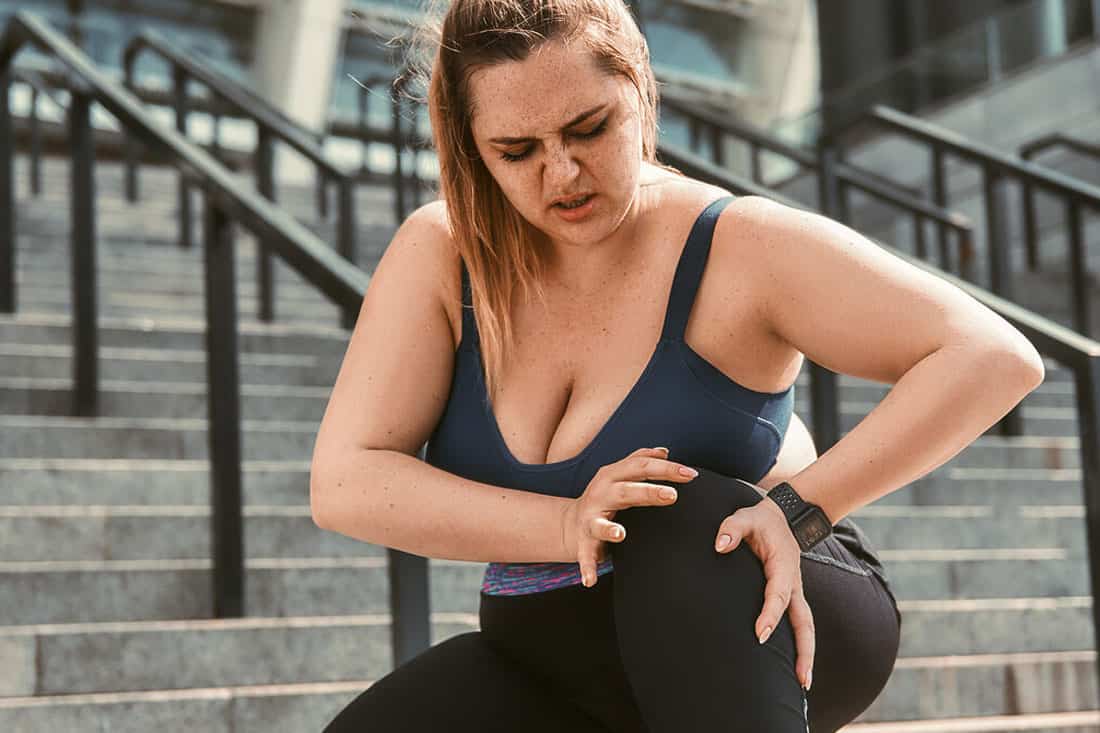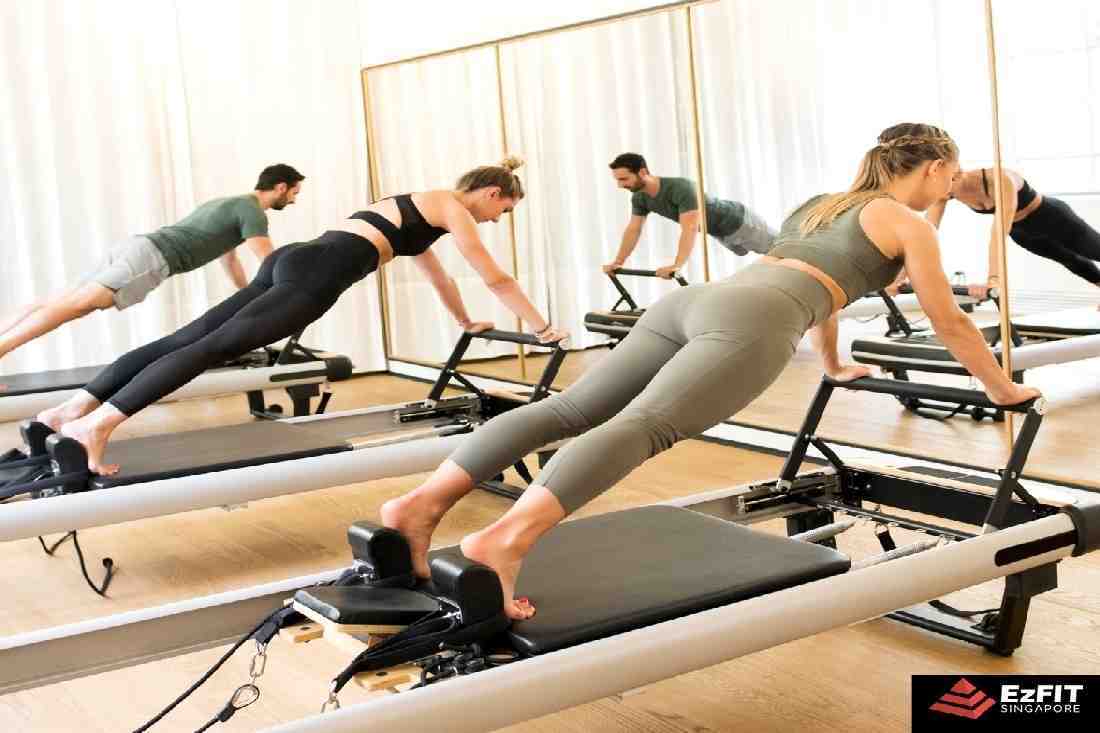Understanding Different Types of Workout Pain
Somebody must have said to you that pain is a weakness that is driven away by our body. Now you might not believe it, but you cannot ignore the feeling of a huge discomfort. Some discomforts are the hallmark of tough and effective workouts. Of course, that is why doctors and medical practitioners call it as delayed onset muscle soreness. However, there are certain pains which are not worth ignoring even though you might seem tough.
The concept of no pain, no gain is somewhat not true in exercising. So, don’t push through if your mind is telling you that there is something else. Most doctors and physicians state that it is better to avoid injuries rather than trying to fix it. Also, if you are injured, don’t avoid or brush off that pain.
Keep in mind that the longer you wait, the more chronic the pain will become. Plus, it will take a longer time to heal and can even lead to other injuries as well as pain.
Good Pain and Bad Pain
Now there is not just one kind of workout pain. There are good kind of workout pain as well as bad kind of workout pain. The good one (not every time) is a sign that you are making progress while the bad pain means that you have hurt yourself.
Frankly, it should go without saying that you must learn to accept the good pain while avoiding the bad one. Unfortunately, you can’t differentiate among the two basic kinds of pain, that too if you are new to exercising. Do you the common kind of good pain? It is the burning muscle pain which you might experience while doing any activity like weight lifting.
Here the burning sensation will get over immediately as soon as you stop doing the activity. Then the major cause is due to the build-up of lactic acid, which is nothing but a natural by-product that is excreted by your muscles. DOMS (Delayed Onset Muscle Soreness) is also one of the common pains you might go through. This is a workout pain which is kind of a generalized ache that occurs as soon as you begin working out.
Initially, the feeling will start within a few hours after you are done with working out or even a couple of days later. You will start to have DOMS when you do new exercises, especially the ones your body is not accustomed to. It can also occur if you increase the workout intensity. Injuries to the connective tissues and muscle fibres which can only be seen under the microscope happen due to the exercise stress. This is the most common culprit of the generalized ache.
Typically, the DOMS will get resolved in a day or two. Also, it won’t impede the day to day abilities of yours. limbs. Still, it is not a pain that you shouldn’t ignore. Of course, there are instances when you might suffer pain from exercising.
It is better if you take some amount of precaution if you feel that the pain is coming while exercising or after exercising. Sometimes serious injuries like a tear or stress factor can also be the major reason for the cause of this pain. In that case, you need to seek good medical attention.
Conditions Not to Be Ignored
The following are the list of the pain conditions you wouldn’t think of ignoring. Such pain must be followed by a visit to the doctor.
- Sharp shooting pain preventing you from moving any of your body parts. These will reduce the range of motion as well as avoid moving altogether.
- Pain in those areas where you must have been injured previously or where you might have had surgery.
- Pain associated with massive swelling or deformity.
- No relief in the pain after many days of rest and even medication involving ice or over the counter inflammatory medicines.
- Constant pain or the pain that keeps worsening in severity.
- Pain that is coupled with bruising as well as pressure.
- Pain caused or related to chills and fevers
- Pain which is very intense causing vomiting or nausea.
- Pain which is very intense causing vomiting or nausea.
Why Muscles Get Sore After Exercising?
Sore muscles after exercising are called DOMS. This will happen when you begin a new exercise program. Also, it will even occur when you modify your exercise routine, and even increase the intensity or duration of your regular workouts.
Now sometimes the muscles would need to work harder compared to what they must do in a normal situation or different ways. In such a scenario, it might cause microscopic damage to your muscle fibres, and this will lead to muscle stiffness or soreness. Sometimes people mistake DOMS to be caused by the build-up of lactic acids. However, lactic acids are not involved in this process.
Who Can Suffer From DOMS?
Any person can get DOMS, including the ones who have been exercising for many years like the elite athletes. It might be alarming for various individuals who are new to exercise. Also, it might even dent their enthusiasm to get fit. Here the good news is that the soreness will reduce once your muscles get used to the new physical demand that is put on them.
Also, the soreness is nothing but a part of the adaptation procedure. This will lead to greater stamina and strength when your muscles begin to build and recover.
Activities Causing DOMS
Keep in mind that any movement you are not used to will lead to DOMS. Activities like doing a new exercise, a harder and rigid workout or working of your muscles in another way will lead to DOMS.
How Long DOMS Will Last?
Typically, the DOMS will last to about 4 to 5 days. Also, the pain can range from mild to severe. This will happen for one or two days after exercising. You need to make sure that this kind of muscle pain should not be confused with other kinds of pain that might occur while exercising like sudden, acute, or sharp pain of an injury like sprains or muscle strain.
Where Will It Hurt?
There might be certain places where it might be sore while you exercise. Unfortunately, these would be the major muscle groups on which you would be training. For example, if you are doing chest exercise, the pain will be on your chest. At times, you might experience sore shoulder or triceps as these are the supporting muscles for various chest exercises like dips and bench presses.
Having a certain level of soreness while or during workouts is quite normal. But on the other hand, if the pain or soreness is in the areas which are unrelated to your training, then it means it is a global problem. Suppose if you have simply done bicep curls and then your lower back starts to hurt or if you are doing squats and there is pain in your shoulder, you are suffering from a bad kind of pain which you must not feel.
Can the Pain Be Sudden and Intense?
Keep in mind that the nature of the pain itself will be one of the useful indicators. So, if you are feeling a bit dull, the low-grade muscle pain will become more slowly especially while working out. These are isolated to the muscles you are training hence it is fine. But if you are feeling a sudden sharp pain which came out of nowhere or if the pain is quite intense as well as overpowering, avoid pushing on with the given sets.
This can be an indicator of something that has gone wrong and can even be related to a muscle tear. In such a case, immediately stop what you are doing.
Is the Pain Radiating or a Shooting One?
Now just like if you feel the pain is radiating or shooting, then it is the sign of something more serious. Like for instance, if you feel that the pain is moving down from your leg or arm, rather than being in the single area. In such a case, it can be signs of spinal issues like a pinched nerve. So, it is better if you consult a doctor if the pain is continuous.
Five Major Workout Pains to Pay Attention
Sharp Pain
Now a stabbing or a sharp pain while exercising (or at any time) is a red flag and it means there is something to worry about. Most doctors feel that sharpness is not close to normal physiological response. So, if you are suffering or experiencing sharp pain, it means there is something in your body which is not functioning properly.
Some of the few common causes of the sharp pain are the impingement of the tendon, like at the shoulder, bone or bone contact, a bony fragment, tear of the meniscus of the knee. Suppose the sharp pain occurs once and not again then it is just an anomaly. So, you have nothing to worry about. However, checking with your doctor might be a good idea if you feel it is worse.
Pain Along with Swelling
Now the pain that you are suffering from is associated with swelling, it indicates a serious issue. Doctors feel that through swelling the body is sending inflammatory factors to various areas. Frankly, when there is an injury, it becomes difficult for the body to differentiate which specific structure must be healed.
So, it will send a lot of blood and other substances to that joint or area, which creates a diffuse swelling. Inflammation is a method through which our body heals. However, if the swelling returns with activity or persist, then it might continue to injure the tissue or area.
Localized Pain
Another sign that shows something is not right is when you are having a pain in a single place. Most doctors feel that any pain that looks localized should not be ignored.
For example, it might not be a normal soreness in the thigh muscles, however, it might be a sharp pain in the groin. So, if such kind of pain is not lingering, there might not be any reason to be concerned of. If the pain is getting consistent with doing any specific exercise, then it is better to get it checked.
Pain Getting Worse While Working Out
If you are exercising or working out, and the pain continues to get worse as you exercise longer and more intense, then it will lead to serious injury to the specific joint or tissue. In such a case, you must stop exercising. Just follow the rule of thumb, if the pain is more than five (one being no pain and ten being extreme pain), you need to stop what you are doing.
Painful Pops
Sometimes you might hear a pop which is accompanied by intense pain. As per doctors, a pop will indicate a partial dislocation or tear. In the case of acute injury, this will lead to the tear of the tendon or ligament. But you need to know what is normal for your body. Sometimes people assume and worry when there is a click or grind in their shoulder, joints or knees. Such noises are not worrisome until they are painful.
Wrapping Up
If you are suffering from intense pain that doesn’t decrease or get cured gradually, then you might have to consult a doctor. Better if you consult a doctor if the pain does not get cured within a minimum of 5 to 8 days.




